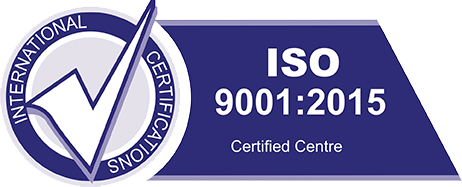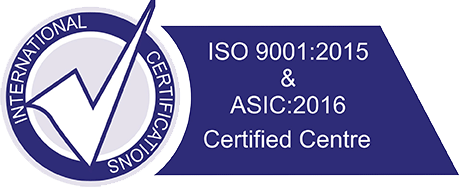Types of Corrective Surgeries That Are Performed Before IVF
You may face unexplained fertility issues or have experienced failed IVF cycle. In such cases, often the doctor might consider corrective surgeries before opting for more advanced treatment options such as In-Vitro Fertilisation (IVF). Treatment and corrective surgeries often increase the chances of conception. Here is a list of corrective surgeries that you may undergo before IVF:
For Men
- Varicocele Repair
Enlarged varicose veins are known as Varicocele. These appear in the scrotum. This surgery is usually done for improving male fertility. This operation is usually done on an outpatient basis. A small incision is required, abdominal approach. The veins responsible for producing the varicocele are located and cut for eliminating blood flow to the varicocele. - Vasectomy Reversal
This surgery is done if the male partner had a vasectomy and now wishes to be fertile. The success rate of vasectomy reversal declines over time. In other words, this process is more successful within the first 10 years after undergoing a vasectomy.
For Women
CORRECTIVE SURGERIES ARE REQUIRED AT DIFFERENT LEVELS IN A FEMALE PARTNER
Laproscopy and hysteroscopy are two main procedures used for this purpose.
Currective Surgeries with Laparoscopy Before IVF
In this process, after putting the patient under anesthesia,a small abdominal incision is made.A laparoscope is introduced in the abdomen and visual inspection of all the structures is done(uterus, tubes, ovaries, POD) . Patency of tubes are recorded by methylene blue dye test(chromopertubation).
Following procedures can be performed
- Laparoscopic Ovarian Drilling
This is a surgical process that can increase the chances of ovulation in women having polycystic ovary syndrome (PCOS). The doctor uses Electrocautery (a laser) for destroying parts of the ovaries. This surgery is usually done by making a small incision under general anaesthesia. The doctor makes a small cut at the belly button and laparascope is inserted through it to perform the procedure. - Myomectomy
Refers to removal fibroids from the uterus. This process increases the chances of pregnancy in many women. Surgical procedure for myomectomy includes identifying the fibroids with the help of laprascopy (sub serosal / intramural) and removing them. Making the uterus as close to normal as possible. - Endometriosis
In case of endometriosis with the help of laprascopy we can identify and destroy the endometritic spots. Release adhesions around ovaries, tubes and POD. Document the condition of th tubes. In case of an ovarian cyst (chocolate cyst), cystectomy can be performed. - Pelvic infection/ Tuberculosis of pelvis
Laprascopy also helps us to confirm if the anatomy is well maintained. In presence of dense adhesions suspicion of pelvic tuberculosis , pelvic infection can be confirmed. Anatomy can be restored by performing laprascopic adhesiolysis.
TUBE RELATED PROCEDURES
- Fallopian Tube Procedure
Blockage in fallopian tube prevents the passage of the egg to the sperm. It blocks the movement of fertilized egg to the uterus. Common fallopian tube procedures include
Tubal reanastomosis: This is done for reversing a tubal ligation or for repairing a damaged part of the fallopian tube.
Salpingectomy: This is the removal of a part of the fallopian tube. This is done for improving the success of in-vitro fertilization in case the tube has developed a fluid build-up.
Salpingostomy: This is done if the end of the fallopian tube is blocked due to fluid build-up.
Fimbrioplasty: This is often done if the part of the fallopian tube that’s closest to the ovary is blocked and is preventing the pickup of the egg.
Hysteroscopic Surgery Before IVF Process
Hysteroscopy: This involves inserting a viewing instrument (hysteroscope) through the vagina and into the uterus (no incision / no stitch).with the help of distension media the cavity is enlarged. Uterine cavity, endometrial lining , tubal opening and size of the cavity are checked and recorded. Any pathology in the cavity can be corrected with the help of hysteroscopy.
- Hysteroscopic myomectomy:
Any submucosal fibroid (right under the endometrial lining) can be removed by hysteroscopy. - Spetum correction:
Sometimes there is presence of a curtain like structure “septum” inside the uterine cavity. With the help of hysteroscopy it is evaluated in size and extent (partial/ complete) and corrected accordingly. - Polypectomy:
Presence of small fleshy mass along the endometrial lining inside the cavity are known as polyps. These are located on hysteroscopy and removed. - Hysteroscopic cannulation of tubes:
In case of cornual block of the tubes, hysteroscopic cannulation can be done to make the tubes patent.
Laparotomy: This is the process where the doctor uses a larger incision in the abdomen. In case of severe adhesions of the abdomen where the laprascope cannot be introduced, lapratomy is done. Or when the mass (fibroid/ tubo-ovarianmass) is too large for laprascopic management, lapratomy is performed.
Had a failed IVF cycle? Considering fertility evaluation/ treatment or IVF? If yes, then you may get in touch with us at +91 766-866-6633.
Source: http://www.webmd.com/women/laparoscopic-ovarian-drilling-ovarian-diathermy-for-pcos
Tags: In vitro fertilization , IVF cycle , In vitro fertilization , IVF cycle

